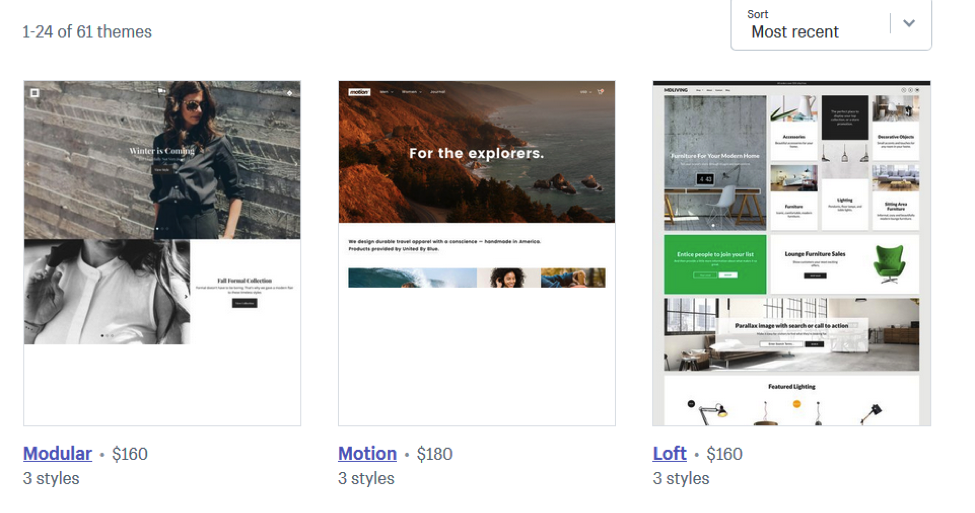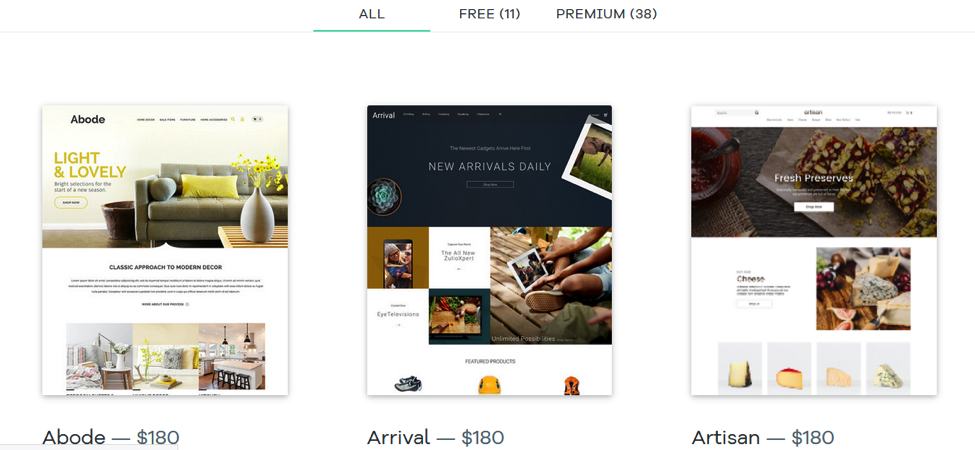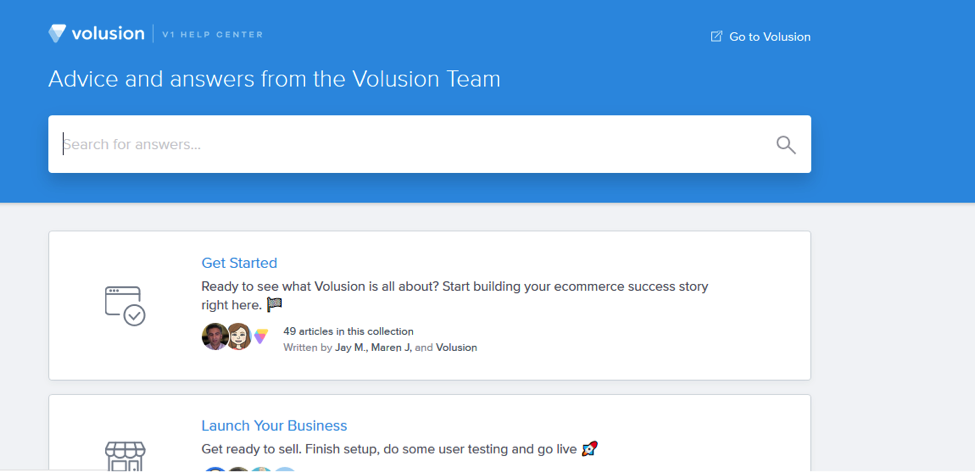Ecommerce platforms are the secret to the quick launch of online stores in today's generation. With these, aspiring online sellers can easily set up their own website even if they don't know a thing about coding. The knowledge for coding or programming has become unnecessary to launching an ecommerce website. As long as you know how to use some ecommerce platforms like Shopify and Volusion, you're all set.
Which ecommerce platform should you use? Shopify or Volusion? Today, you'll learn the answer.
The battle of ecommerce platforms begin. I will take you into the pros and cons of two of the most popular ecommerce platforms online: Shopify and Volusion. Hopefully, this will help you decide on the platform that you should use for your own website.
Interface
When it comes to interface, ease-of-use is the most important criterion for ecommerce website owners. Ideally, ecommerce website owners are looking for a platform that will make their lives easier. This means that they should be able to create an online store in a few minutes and customize the website according to their needs.
On the surface, Shopify and Volusion seems to be at par with each other. Shopify offers a menu on the left hand area that allows the ecommerce website owner to tweak certain aspects of their online store. Volusion, on the other hand, has a horizontal navigation bar that takes the ecommerce website owner to their world of customization. However, there is an apparent difference when it comes to user-friendliness.
Shopify is a lot like Wordpress. It has a vertical navigation bar for all of its modules in the left hand side of the screen. The selection is wider and more varied in Shopify compared to Volusion. In fact, users have found that they have to Google search some aspects of Volusion before they can fully use it.

Volusion knows that their users are having a hard time with their website. With this, it has now implemented a wizard that can help their users set up a store in a few steps. However, users continue to complain of the lack of customization features. On top of these, Volusion also asks for the user's credit card information before allowing them to use the platform – a feature that is quite annoying to first time users.
Shop Design
Ecommerce shop design also known as the 'Shopify or Volusion themes' allow ecommerce sellers to instantly have a well-designed online store with a click of a button. This is important because design encourages trust. In an age where customers are highly visually oriented, design plays an even larger role. In fact, it is now a criterion that can pull customers into a website or push them away.

Both Volusion and Shopify have a selection of themes that allow you to set up an ecommerce website quickly. However, they differ in terms of responsiveness and pricing. Shopify themes pricing range from $0 to $180 while Volusion themes range $0 to $895. In terms of responsiveness, Volusion has 160 responsive themes out of the 277 available themes while Shopify offers nothing less than responsive themes.

In terms of design aesthetic, I'll leave that to you. Some people may love the classic feel of Volusion while others may prefer the modern feel of Shopify.
But if I were to evaluate this criterion, I think that Shopify wins because of its responsive themes and lower price per theme.
Blogging Options
Selling for its own sake is no longer effective. Customers often need a strong reason to choose you over your competitors. They will not buy from you just because they need your product. Often, they will buy from you because they trust and like you. Trust and credibility can only be formed if you have a solid content marketing plan in place. The easiest way to do this is through blogging.
In this area, you can choose Shopify's built in blogging tool or Volusion's Wordpress integration.
In Shopify, you can start blogging on the fly. Just click on the blogging tool and you can already start adding some blogposts to your online store.
But it is an entirely different story for Volusion. You may need to learn Wordpress and integrate it with the online store. And instead of a domain.com/blog address for your blog, you'll get a subdomain instead. This may not be ideal for new bloggers.
With this, Shopify wins again. The built-in blogging tool can help new ecommerce website owners to set up their blogs by simply pasting their blogposts. No extra setup needed.
POS (Point of Sale) Options
When it comes to POS or Point of Sale functionality, Volusion allows 3rd party services while Shopify allows the integration of a card reader to an app on an iPad.
POS systems refers to a payment functionality allowing checkout through electronic forms of payments or barcodes. This includes credit or debit cards or mobile cash payments (ex. Apple Pay).

For this, Shopify allows the integration of card readers to an iPad. The iPad only needs the app and it can immediately receive payments. But there's one downside. The functionality is limited to the iPad – This means that you cannot have a POS system if you are working with other devices.
Meanwhile, Volusion allows the use of different add-on devices like a receipt printer, card reader or UPC scanner. This shows how flexible Volusion is when it comes to providing POS options to their users.
For this criterion, I will declare it as a draw for this will depend on your desired POS option. Shopify offers a no-brainer POS system that you can install and use right away while Volusion allows the integration of payment readers or systems that is not dependent on the iOS platform.
Apps
While the theme covers the basic ground in online store website design, apps enhance the functionalities of your website. Whether it is for accounting, marketing or customer service, there are apps that can enhance your online store.
Shopify and Volusion is different from each other in just one area - the app number. Shopify provides as much as 1,500 apps while Volusion only offers 80 apps. While apps are not free, Shopify still offers a wider array of apps to their users. But this doesn't mean that Volusion is not listening to their customers. Their apps cover all the basic categories such as marketing, shipping, accounting, customer service and newsletter creation.
With this, Shopify takes this round once again for having more apps to offer to their consumers.
NOTE: If you like to use certain brands with your ecommerce platform, you need to check if the brand is compatible with your desired platform. There are some apps that are only compatible with one platform.
Marketing
You may have constantly seen Shopify triumph over Volusion. But this time, the tables have turned. When it comes to marketing, no ecommerce platform can beat Volusion.
The great thing about Volusion is its built-in features.
First, it allows sellers to have their own affiliate program. Affiliates are sellers that are willing to market your online shop in return for a cut on the sale. This is the key to having hordes of people promoting your website. It is a good thing that Volusion has a tool like this.
Aside from affiliate program support, you can also use its CRM system. This integrates seamlessly with Volusion's email marketing tool so that you can easily reach out to your customers as well as retarget them for future product campaigns.
NOTE: A word of warning. Volusion limits the number of emails that you can send using their platform. Their premium plan limits emails to 2000 per month while the Mini Plan doesn't allow newsletter emails. So if you have a huge list, you may want to integrate the platform with Volusion instead.
Meanwhile, Shopify doesn't really have a marketing capability. Aside from the CRM and email marketing apps that can be downloaded in Shopify's app store, the platform really doesn't have much to offer in terms of marketing.
Pricing
Shopify offers 5 pricing plans. First is Lite that charges $9 per month. Then, there is Basic Shopify that charges $29 per month. Shopify that charges $79 per month. Advanced Shopify that charges $299 per month and Shopify Plus for custom requirements.
Meanwhile, Volusion has 4 plans. First is Volusion Mini that charges $15 per month. Then, there's Volusion Plus that charges $35 per month. Volusion Pro that charges $75 per month and Volusion Premium that charges $135 per month.
But what do these all mean?
We can understand what the platforms have to offer by looking at its entry level plans. For Shopify, this is Shopify Lite that charges $9 per month. But for Volusion, it is Volusion Mini that charges $15 per month.
On the surface, it may seem that Shopify was won in terms of having more plans and having a lower entry level cost. But looking at the features will reveal that the entry level of Shopify is limited to Facebook marketing. This is unlike the $15 per month of Volusion that gives the user an online store with a 100-product limit and 1 GB bandwidth.
NOTE: You should consider more than just the plan pricing. If you will use 3rd party processors, you may also need to pay some hefty transaction fees. For Shopify, the fees become lower as you upgrade your plan. For Volusion, you don't have to pay for anything.
Payment Gateways
Payment gateways are essential to every online store. Without it, customers will have no way to pay for products or services. Shopify and Volusion offers a variety of payment gateways to ecommerce website owners.
The first difference is number. Shopify offers 70 payment gateways while Volusion only offers 30 payment gateways. The number can go up or down depending on your territory. For example, Volusion payment gateways will come down to 8 if you are located in Europe.
Also, you must consider the transaction rate. Volusion doesn't require any transaction rate while Shopify requires 2.15% of the sales. This can have a massive impact on how you price and sell your products.
So who wins this round? I don't know. Shopify offers more payment gateways but the transaction fee is quite annoying.
Support
Support is essential for you will need all the assistance you can get to fully get your online store of the ground. For this, there's online and phone support for all of your questions.

For Volusion, online support is available for everyone. This is done either through live chat or email. However, phone support is only available in the $35 Plus Plan.
Shopify, on the other hand, offers live chat, email and phone support for people who have bought their $29 plan. Access to telephone numbers is easy. You just need to choose the number that is nearest to your location.
NOTE: Shopify also has a forum where users can easily post questions and exchange tips with each other. The community has grown over the years so there are many people who can help you whenever you feel lost.
Who wins this round? Shopify. It gives phone support for a lower priced plan.
THE WINNER: SHOPIFY
Let us do a quick recap of all the factors we considered in this battle:
Interface – Winner: Shopify for its easy to use Wordpress-like interface
As you can see, 3 out 9 is a draw. Volusion wins in 1 out of 9 criteria while Shopify wins in 5 out of 9 criteria. Clearly, Shopify is the winner of this battle.
Your email address will not be published. Required fields are marked *
Comment moderation is enabled. Your comment may take some time to appear.
Please read the "User Review and Comment Policy" before posting.
Liz Hull
August 5, 2017 at 9:01 pm
Liz is a recent college graduate living in Washington state. As of late, she can often be found haunting eCommerce forums and waiting on hold with customer service representatives. When she's free, Liz loves to rock climb, watch Spanish dramas.
Reply39 Comments
Leave a comment
Buddy Hansen
August 5, 2017 at 9:01 pm
I’d like to know what the actual real life rate folks using Big Commerce with PayPal are paying. As I understand it if the transaction is a PayPal transaction the rate is 2.9%. If it’s credit card it’s 2.2. Can anyone report on the split between their customers payment type is and what the effective rate might be?
ReplyBuddy Hansen
August 5, 2017 at 9:01 pm
I’d like to know what the actual real life rate folks using Big Commerce with PayPal are paying. As I understand it if the transaction is a PayPal transaction the rate is 2.9%. If it’s credit card it’s 2.2. Can anyone report on the split between their customers payment type is and what the effective rate might be?
ReplyBuddy Hansen
August 5, 2017 at 9:01 pm
I’d like to know what the actual real life rate folks using Big Commerce with PayPal are paying. As I understand it if the transaction is a PayPal transaction the rate is 2.9%. If it’s credit card it’s 2.2. Can anyone report on the split between their customers payment type is and what the effective rate might be?
Reply